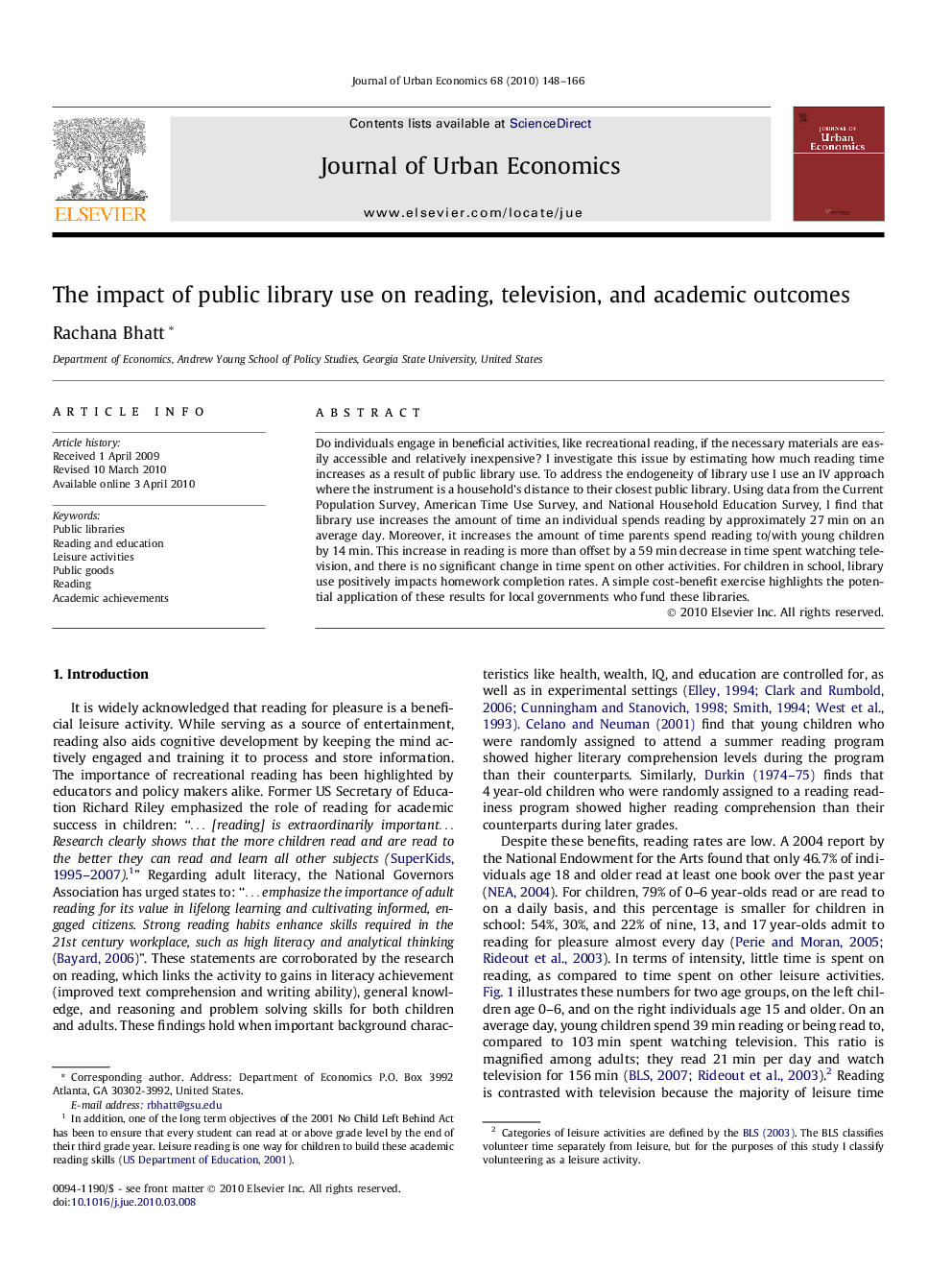| Article ID | Journal | Published Year | Pages | File Type |
|---|---|---|---|---|
| 971285 | Journal of Urban Economics | 2010 | 19 Pages |
Do individuals engage in beneficial activities, like recreational reading, if the necessary materials are easily accessible and relatively inexpensive? I investigate this issue by estimating how much reading time increases as a result of public library use. To address the endogeneity of library use I use an IV approach where the instrument is a household’s distance to their closest public library. Using data from the Current Population Survey, American Time Use Survey, and National Household Education Survey, I find that library use increases the amount of time an individual spends reading by approximately 27 min on an average day. Moreover, it increases the amount of time parents spend reading to/with young children by 14 min. This increase in reading is more than offset by a 59 min decrease in time spent watching television, and there is no significant change in time spent on other activities. For children in school, library use positively impacts homework completion rates. A simple cost-benefit exercise highlights the potential application of these results for local governments who fund these libraries.
